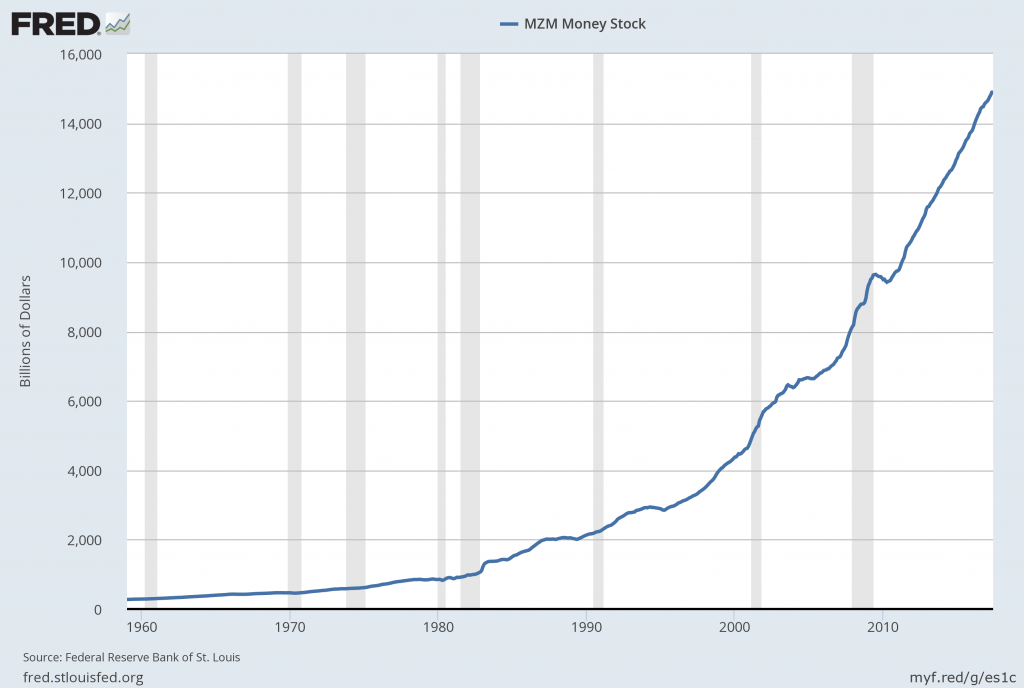Absorption Costing Explained, With Pros and Cons and Example
Contents:


This strategy considers direct and indirect expenses, such as the direct materials and direct labor, as well as the rent and insurance payments. Absorption costing is a method of calculation that assigns all manufacturing costs and overhead expenses to products or services. Variable costing is a similar method of calculation that only assigns direct materials and direct labor costs. Absorption costing is a costing system that is used in valuing inventory. It not only includes the cost of materials and labor, but also both variable and fixed manufacturing overhead costs. This guide will show you what’s included, how to calculate it, and the advantages or disadvantages of using this accounting method.

This is because variable costing will only include the extra costs of producing the next incremental unit of a product. You need to consider direct material cost per unit, direct labor cost per unit, variable manufacturing overhead cost per unit, and fixed manufacturing overhead per unit. The approach of management accounting known as “absorption costing,” also known as “full costing,” on occasion, is designed to compile all of the expenses related to the production of a specific item.
If the https://1investing.in/ cost of one job is 500 it will have to absorb 20% i.e. 100 as the overhead cost making the total cost to be 600. This method can be used in service industry where the major input is the skilled or unskilled labour. For the proper calculation labour rates need to be constant and the skill and efficiency of the labourer need to be identical. Expensive materials may result in less overhead expenses than cheap materials. Thus, overhead cost has nothing to do with direct material cost of a product. Absorption costing improves the accuracy of your accounts for ending inventory, as expenses are linked to the total cost of your inventory on hand.
Full absorption costing — tax considerations
Actual or predetermined direct labour cost method is calculated by dividing the overhead cost apportioned by the wages paid or expected to be paid and expressed as a percentage. Therefore, calculated costs include direct and indirect costs, such as materials, commissions, wages, quality control costs, insurance, and rent. In other words, under absorption costing, each unit of goods has a total production cost of just over $4. First, it is quite easy to derive a product price using this method, since it is based on a simple formula that does not have to be calculated by someone with specialized training. Second, as long as the budget assumptions used to derive the price turn out to be correct and a profit margin is added, a company will probably earn a profit if it uses this method to calculate prices. People often quote random numbers however, it is very important to determine what costing method will be used for a correct expense report.
Best Blood Sugar Supplements That Work for Healthy Glucose Levels – NDTV Doctor
Best Blood Sugar Supplements That Work for Healthy Glucose Levels.
Posted: Wed, 12 Apr 2023 09:50:15 GMT [source]
Instead, these costs are expensed in the period that they occurred. The cost calculation is systematically assigned to the product because there are not batches or LOTS. Absorption Costing can provide a complete picture of the financial cost calculation. This means regularly reviewing your cost structure and making changes when necessary.
This method is also known as the full costing method as it considers all the costs while computing unit costs. The costs which are included in the absorption costing method are direct labor costs, direct material costs, fixed overhead costs, and variable overhead costs. The absorption cost can be calculated by adding direct costs and production overhead costs.
When should absorption costing be used?
Absorbed cost is an accounting method that includes both the direct costs and indirect costs involved in manufacturing goods. Absorbed costs can include expenses like energy costs, equipment rental costs, insurance, leases, and property taxes. There are also several disadvantages of using the absorption pricing method. First, a company may set a product price based on the absorption pricing formula and then be surprised when it finds that competitors are charging substantially different prices.

This costing method treats all production costs as costs of the product regardless of fixed cost or variance cost. It is sometimes called the full costing method because it includes all costs to get a cost unit. Those costs include direct costs, variable overhead costs, and fixed overhead costs. Absorption costing assigns all manufacturing costs and overhead expenses to products or services, while marginal costing only assigns direct materials and direct labor costs.
prepaid rent is nothing but the sum of direct material cost and direct labour cost. Absorption is not required if an organization does not use standard costing. However, absorption costing has certain benefits, such as more accurate tracking of fixed costs and a better understanding the cost of goods sold. Additionally, absorption costing can provide valuable information for management decision-making. Under the absorption costing method, the overhead expenses that are not directly related to the product are distributed over all units.
Profitability Despite Lack of Knowledge- Drawbacks of Utilizing Absorption Costing
Organization’s Balance SheetA balance sheet is one of the financial statements of a company that presents the shareholders’ equity, liabilities, and assets of the company at a specific point in time. It is based on the accounting equation that states that the sum of the total liabilities and the owner’s capital equals the total assets of the company. Absorption costing means that ending inventory on the balance sheet is higher, while expenses on the income statement are lower. This type of costing method means that more cost is included in the ending inventory, which is carried over into the next period as an asset on the balance sheet. With the process of primary apportionment or distribution, the loading of overheads for all the departments i.e. production as well as service departments can be obtained. The next step is to transfer the overheads of non-production departments to the production departments, as the various cost centers move through the production departments only.
- Neither the markup nor the unit product cost can be computed without such a forecast.
- It is possible that sure of the additional costs that are required to be capitalized for tax purposes can also be capitalizable for financial reporting.
- Finally, we need to be comfortable with working out any over or under absorption.
- Like we’ve seen previously, they’re used to charge or absorb overheads into products; therefore, we can work out estimated full production costs.
While absorption costing includes all four of these components in its product cost calculation, another inventory valuation method known as variable costing does not include fixed manufacturing overhead. There are a number of advantages and disadvantages of absorption costing that should be considered before using this method to calculate product costs. However, some of the disadvantages include the potential for distortion of profitability, potential poor valuation of actual costs, and lack of insights provided about operational efficiency.
Recall that selling and administrative costs are considered period costs and are expensed in the period occurred. It also considers all direct costs (i.e. materials, labor, and expenses). Next, determine the total variable and fixed manufacturing overhead ($). The total variable and fixed manufacturing overhead ($) is found to be 321. Absorption costing is typically used in situations where a company wants to understand the full cost of producing a product or providing a service.
Absorption costing provides this vital information, making it a valuable tool for any company looking to stay competitive in today’s marketplace. To determine the cost of each activity, you will need to figure out the usage for each activity. This includes the labor or equipment usage hours throughout the manufacturing process.
Sales price method is inequitable for absorbing production overhead because production overhead has no specific relationship with sale price of products. The total of standing charges per hour and machine expenses per hour is the ordinary machine hour rate. The machine hour rate may be calculated for a specific machine or group of machines. This method fails to take into account the expenses which are not incurred according to labour hours, such as power, depreciation, fuel, insurance, etc.
Compute the selling price of a product using the absorption costing approach. Contribution margin analysis is a technique used to calculate the amount of contribution margin per unit. This allows businesses to see how much revenue they need to generate from each product to cover their fixed costs. Fixed costs do not fluctuate with changes in production levels, making them more difficult for smaller firms to manage. However, these costs must still be accounted for when determining the price of a product.
Best Toenail Fungus Infection Support Supplements – Review Top … – WISH TV Indianapolis, IN
Best Toenail Fungus Infection Support Supplements – Review Top ….
Posted: Tue, 11 Apr 2023 09:31:00 GMT [source]
Absorption Costing therefore includes much more than the necessary variable costs such as labour and raw material. To properly understand and use absorption costing data, non-financial managers must understand the concept. As a result, they may misinterpret the data or make suboptimal decisions based on it.
That will give an overhead absorbed of $40 in respect to department A overheads. The main difference between absorption costing and variable costing is how they treat fixed manufacturing overhead costs. In absorption costing, fixed manufacturing overhead costs are included in the product cost, while in variable costing, all fixed manufacturing overhead costs are treated as period costs. This means that in absorption costing, every product manufactured in a specific period has a portion of the fixed manufacturing overhead costs included in its product cost. Absorption costing is linking all production costs to the cost unit to calculate a full cost per unit of inventories.
The components of absorption costing include both direct costs and indirect costs. Direct costs are those costs that can be directly traced to a specific product or service. These costs include raw materials, labor, and any other direct expenses that are incurred in the production process. Because absorption costing does not allow for the deduction of fixed expenses from revenue until after the units have been sold, it provides inaccurate information on the amount of money the firm is making. The corporation’s income statement may indicate unaccounted-for costs, but the balance sheet would indicate that the company is profitable. Using the absorption costing approach, the pricing problem looks deceptively simple.
GlucoCalm Reviews (Peak Biome) Ingredients, Side Effects, Negative Customer Complaints – Outlook India
GlucoCalm Reviews (Peak Biome) Ingredients, Side Effects, Negative Customer Complaints.
Posted: Fri, 31 Mar 2023 07:00:00 GMT [source]
Suppose a corporation operates with just-in-time inventory, which means it does not keep any starting or ending stock. In that case, the amount of profit generated will remain the same regardless of the method used. Sales and administrative costs should be put in expense in the period incurred. These costs should not be added to stock since they are not related to goods produced.
As the name implies, only variable product costs are used to calculate the cost per unit of a product. Therefore, we will not include any of the fixed overhead in the cost of the product. To apply predetermined absorption rates, the actual value (i.E., The actual number of units or any other actual base data such as direct labor hours or machine hours) is multiplied by the predetermined rate. To apply predetermined absorption rates, the actual value (i.e., the actual number of units or any other actual base data such as direct labor hours or machine hours) is multiplied by the predetermined rate.


